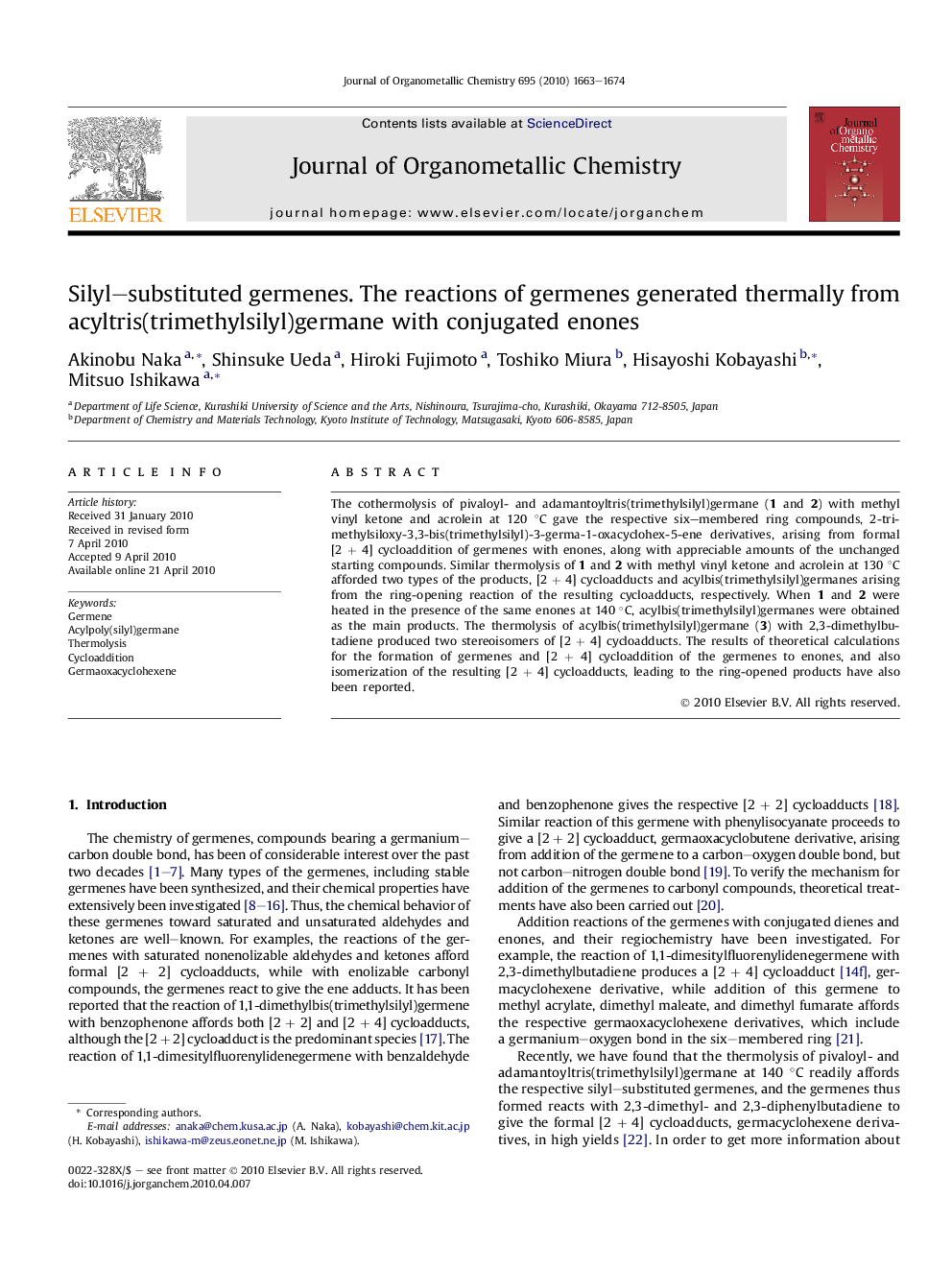| Article ID | Journal | Published Year | Pages | File Type |
|---|---|---|---|---|
| 1325798 | Journal of Organometallic Chemistry | 2010 | 12 Pages |
The cothermolysis of pivaloyl- and adamantoyltris(trimethylsilyl)germane (1 and 2) with methyl vinyl ketone and acrolein at 120 °C gave the respective six–membered ring compounds, 2-trimethylsiloxy-3,3-bis(trimethylsilyl)-3-germa-1-oxacyclohex-5-ene derivatives, arising from formal [2 + 4] cycloaddition of germenes with enones, along with appreciable amounts of the unchanged starting compounds. Similar thermolysis of 1 and 2 with methyl vinyl ketone and acrolein at 130 °C afforded two types of the products, [2 + 4] cycloadducts and acylbis(trimethylsilyl)germanes arising from the ring-opening reaction of the resulting cycloadducts, respectively. When 1 and 2 were heated in the presence of the same enones at 140 °C, acylbis(trimethylsilyl)germanes were obtained as the main products. The thermolysis of acylbis(trimethylsilyl)germane (3) with 2,3-dimethylbutadiene produced two stereoisomers of [2 + 4] cycloadducts. The results of theoretical calculations for the formation of germenes and [2 + 4] cycloaddition of the germenes to enones, and also isomerization of the resulting [2 + 4] cycloadducts, leading to the ring-opened products have also been reported.
Graphical abstractThe cothermolysis of pivaloyl- and adamantoyltris(trimethylsilyl)germane (1 and 2) with methyl vinyl ketone and acrolein at 120 °C gave the respective six–membered–ring compounds. At 140 °C, the same reactions afforded acylbis(trimethylsilyl)germanes arising from ring–opening of the six–membered–ring compounds as the main products.Figure optionsDownload full-size imageDownload as PowerPoint slide
